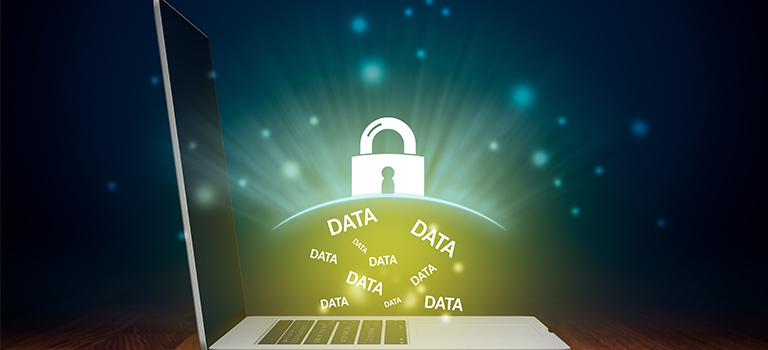Cybersecurity threats doubled due to the COVID-19 lockdown, with hackers targeting home-based businesses that have weaker security as a result of new security measures. With that in mind, protecting your organization from such attacks is essential.
One effective way to do this is through the use of cyber threat intelligence. This is a crucial element in cybersecurity that could help save your company from major financial losses.
Threat intelligence allows the business owner or the executive management to be informed about the basics, even if your IT security team deals with the finer details.
What is Threat Intelligence?
Threat intelligence means collecting data to build a wall of defense against future threats. It is any information that could help you predict an attack, detect that something is out of ordinary, or find the right solution that will defend your systems from an attack as quickly as possible.
Cyber threat intelligence is also a broader term that considers various sources of data.
Namely, even if you need to protect your organization exclusively, data collected from social media intelligence, technical intelligence, human intelligence, open-source intelligence, and even dark web will be of value to your company.
Types of Threat intelligence
There are four types of threat intelligence.
1. Strategic
Strategic threat intelligence is focused on the audience that is not IT savvy. It is used to describe the concrete consequences your business could suffer for using the data that is gathered.
That is to say, it depicts the worst possible cyberattack scenario that can happen to your company.
2. Tactical
Tactical threat intelligence is a bit more complex than the strategic intelligence threat type. It goes deeper into the technicalities of intelligence indicators.
The latest novelties in cyberattacks are taken into consideration to predict possible future attacks and their damage to systems.
3. Technical
Technical threat intelligence is oriented on specific clues that indicate when your cyber systems are endangered.
Hackers constantly improve their techniques and utilize more intrusive and more advanced methods to attack your websites. However, this type of threat intelligence is still relevant for data collection and prediction of possible attacks as it gathers new data and learns from past attacks.
4. Operational
Hackers or hacktivists will attack your business for different reasons. They might want to damage a part of your business or take your website down entirely. Depending on their skills and intent, attacks will differ.
Operational threat intelligence offers insight into the mind of hackers that go after your company.
Signs You Are the Target of a Cyberattack
Signs that hacktivists or hackers have targeted you will vary. Essentially, hackers can end up exposing stolen data or you may end up incurring financial losses because of stolen keys and passwords.
No matter which form these attacks take, they will have the potential to damage your reputation in just a few seconds.
It’s also possible that your company could have suffered an attack without you knowing it. Not all cyberattacks are the same, and even certain types of malicious DDoS attacks tend to go unnoticed. For example, they might just slow down the site.
Seemingly uneventful attacks may also cause your company to suffer significant losses. Even if your entire system, cloud, app, or website does not go down, hackers still could have stolen sensitive information or caused a drop in sales.
What to Do to Prevent Future Cyberattacks
To prevent future occurrences of attacks, you must assess your business and technical risks today. Additionally, you must identify the right strategies and technologies to mitigate such risks.
Threat intelligence can provide you with the information you need to do this successfully, including intelligence on trends like which types of attacks are becoming more or less common, which threat actors are coming forward, the assets and enterprises they are targeting, and the security practices and technologies that have proven the most or least effective in stopping these attacks.
With these types of intelligence, gathered from a broad set of data sources, your security team will be able to gain a more complete view of the cyber risks that could affect your organization in the future. Additionally, it will help you find ways to stop it even before it happens.
Let’s look at steps in gathering intelligence.
Steps to Data Gathering
Data gathering will depend on the company you employ to manage potential cyber threats. However, most companies will take similar steps to prevent losses from happening.
The first step is to gather all available data from various open sources. Relevant sources may include anything from commercial security data to dark web intelligence.
The second step is to analyze the details of gathered data and catalog the types of threats that appear.
The third step is detecting any new type of threat that might endanger a company. Hackers can attack you from any part of the world, and there are many of them. Furthermore, they continuously learn from each other and find new techniques to damage your business.
The fourth step is using that data to secure the organization from possible threats by detecting and predicting cyberattacks. A hired analyst can use the threat intelligence data from your company and open sources to deflect any attacks.
Final Word
Threat intelligence is a significant factor that can prevent future cyberattacks and essentially save your business from financial losses that could lead to bankruptcy.
With it, you can understand a threat actor’s motives, targets, and attack behaviors. In turn, this gives security decision makers the intelligence and context to make faster, data-backed security decisions.
Gathering and effectively using such intelligence usually requires expertise, so if you’re not adept in doing it, it is advisable to hire an in-house security team or even a security company to use this data to prevent detrimental cyberattacks.


